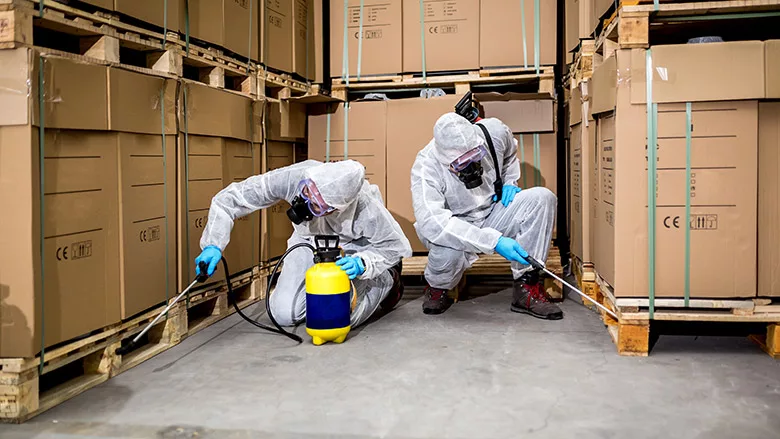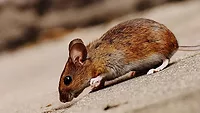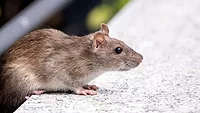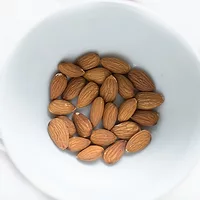Seasonal Pest Prevention Tips for Commercial Food Facilities

Credit: Bluegame/iStock / Getty Images Plus via Getty Images
With warmer temperatures comes enjoyable weather and, unfortunately, more pests. Higher temperatures and greater precipitation can cause an increase in pest activity, especially for seasonal pests.
Termites are known to swarm in the early spring across the U.S., when groups of reproductive termites, appropriately nicknamed "swarmers," begin starting new colonies. These winged adults typically only produce a few eggs in the first year. Once the colony's queen matures, however, she will produce about 5,000 to 10,000 eggs per year. Within five to ten years, a colony can reach a mature size of over 60,000 termites. These destructive pests can cause extensive damage to structures and can even collapse buildings entirely.
Although rodents are active year-round, rats breed the most in the spring and autumn. Rodents are known to transmit harmful diseases through their feces, urine, and bites. Some of the most common rodent-borne illnesses include hantavirus, tularemia, salmonellosis, and plague. Rodents contaminate 20 percent of the international food supply each year, making them a particularly harmful pest for the commercial food industry.
Since cockroaches prefer warm, moist environments with temperatures between 70° F and 80° F, spring and summer are significant times of year for these pests. Cockroaches are common in larger commercial facilities, where they invade in search of food and shelter. Like rodents, cockroaches can also contaminate food by spreading multiple kinds of bacteria, parasitic worms and human pathogens. Their saliva, urine, and feces can also trigger allergic reactions and even asthma attacks, making them a threat to vulnerable employees and customers.
Pest control should always be top-of-mind for facility managers, but spring and summer provide a great opportunity to set up commercial facilities for success year-round. Managers can take several key steps to start off pest season on the right foot:
- Conduct regular inspections. One of the simplest steps to take is simply monitoring for signs of seasonal pests. Routinely inspect the inside and outside of the facility for signs of rodents, including urine, feces, gnaw marks and nests. Unusual odors or sounds may also be signs of an infestation. Kitchens and bathrooms should be closely inspected for signs of insects in search of moisture and food. Signs of an insect infestation can include droppings, eggs, or discarded wings from termite swarmers. Also, ensure that materials entering the facility are free of pests before bringing the materials inside. Cockroaches and stored product insects could contaminate packed food.
- Reduce points of entry. Spring and summer are good times of year to evaluate any exterior damage the facility may have suffered during winter. It is crucial to limit the number of possible entrances pests can use to access the inside of the building. Any cracks, gaps, or holes in the exterior walls should be sealed with caulk or steel wool, particularly in areas where utilities enter the structure. Rodents' bodies are extremely flexible, which allows them to fit through holes the size of a quarter. Insects need even less room and can slip through tiny crevices with ease. Inspect all vents, windows, and doors for damage and repair any torn screens. Exterior doors should also be fitted with door sweeps.
- Perform routine facility maintenance. Since many pests, including cockroaches, are attracted to moisture, ensure that crawl spaces and storage areas are well-ventilated and dry. In the spirit of "spring cleaning," it's also a good opportunity to ensure that storage spaces are tidy and organized to eliminate potential hiding spots for pests. On the exterior of the building, replace any weakened weather stripping or loose mortar. Any damaged fascia or wood roof shingles should also be replaced, as many pests are attracted to rotten wood.
- Remove potential food sources. It is no surprise that commercial food facilities attract pests in search of food. Seasonal pests and typical "pantry pests," including Indian meal moths and merchant grain beetles, can all contaminate stored food. Continue mid-year cleaning by discarding any expired or uncovered food to avoid using tainted products. All usable food items should be stored in tightly sealed containers to prevent contamination from pests. Keep floors and surfaces clean and free of crumbs. Practice proper waste management techniques by securing trash receptacles, and routinely dispose of garbage from the facility. If there is a dumpster onsite, confirm that it is emptied regularly to avoid attracting pests.
- Team up with a licensed professional pest control company. The most important way to stay on top of pest control is to obtain additional support from a licensed pest control company. Many companies specialize in commercial pest control and can implement an Integrated Pest Management (IPM) plan. IPM plans provide a tailored approach to pest control, including thorough inspection, identification, and treatment to ensure that facilities are both clean and compliant. Many pest control professionals will perform a thorough audit of the facility as part of their IPM plan. This audit identifies key areas that could instigate pest activity, including unnecessary clutter, unmaintained exteriors, or standing water. They can make recommendations to address potential issues with steps including the installation of non-attracting light and correcting drainage problems.
While these actions are great steps to add to a facility manager's seasonal cleaning list, it is important to stay on top of pest control throughout the year. Employees and customers will be kept safe by staying mindful and vigilant about pest prevention strategy.
Looking for quick answers on food safety topics?
Try Ask FSM, our new smart AI search tool.
Ask FSM →








